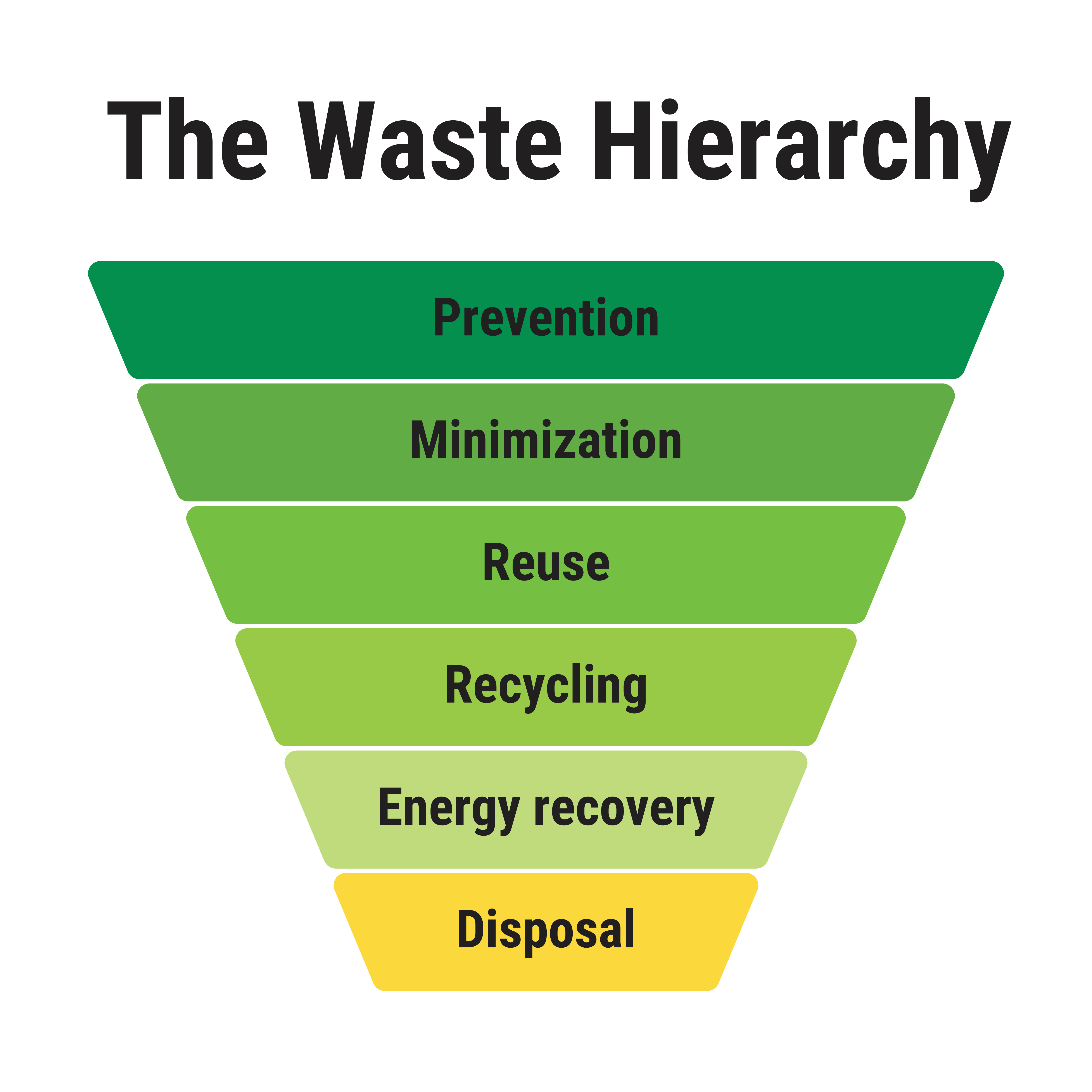
Creation date
A waste hierarchy helps manufacturers identify which of their waste products can be re-used in their production lines to help create new products and improve their processes. This way, waste disposal can be efficient and more recyclable waste can be better managed.
Re-introducing recyclable waste into the production chain is one of the most important parts of a truly circular economy, one that reuses resources instead of wasting them when possible. Waste management will always be important in the manufacturing space, but by organizing a waste management hierarchy designed to prioritize recyclable materials over waste products, manufacturers can save themselves money, time, and energy.
A typical waste hierarchy puts the product at the top of an inverted pyramid with the label Prevention. This means that the top priority in the hierarchy is the prevention of waste products in the first place, leading to fewer resources being used to recycle, recover, or dispose of, waste products.

Below the product and waste prevention block are all the waste products in the hierarchy. As you move down the pyramid, the next priority is preparing waste products for reuse. After that, the next priority is finding ways to recycle parts of the waste products, followed by recovering usable waste products, and finally, disposal, only after all other waste hierarchy options have been used.
This waste hierarchy is a new way of thinking about the industrial waste that maximizes recycling and reusing resources when possible. The main benefit of course is the monetary savings that factories can realize by reusing their byproducts as much as possible. But this hierarchy could have wide-reaching benefits for companies struggling with waste disposal costs and logistics. As more factories around the world adopt this hierarchy, the cost of production materials could lessen for the industry and lead to better use of resources worldwide.
